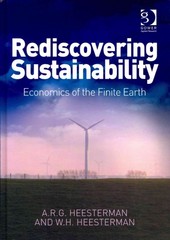(3) Now use a Spreadsheet to calculate and plot the time paths of ination, output, nominal and interest rates for 50 years after the initial demand shock (t = 0, 1, , 50). Describe ina {71 output, nominal and real interest rate dynamics associated with this adverse aggregate demand shock. Explain how monetary policy responds to the ination and output gaps. (3 points) Intermediate macro: Assignment #1 3 (4) (5) Suppose the RBA decides to respond more aggressively to output gap by setting 6,, = 0.3 and y = 1. Keeping all other parameters as in Table 2, recompute the time paths of output, ination, nominal and real interest rates for 50 years after the initial demand shock (15 = 0, 1, , 50). Explain how the policy change affects the time paths of ination, output, nominal and real interest rate. Is there a policy tradeoff between ination and output? Explain. (3 points) For the remainder of this question consider the implications of a modied version of the dynamic ASAD model, where people's ination expectations may be subject to random shocks. Suppose that peOple's expectations of ination are subject to random shocks. That is, instead of being merely adaptive, expected ination in period t, as seen in period t 1, is lEt_1(7r,) = m4 + 77,4, where m4 is a random shock. This shock is normally zero, but it deviates from zero when some event beyond past ination causes expected ination to change. Similarly, Edam\") = 1r, + Th- Derive both the DAD and the DAS equations in this slightly more general model. (3 points) (6) Following part (5), suppose that the economy experiences an inflation scare. That is, at year t = 1, for some reason, people come to believe that inflation in year t = 1 is going to be higher, so m = 1 for this year only. Starting in the long-run equilibrium, use the parameter values in Table 2 and the new DAD and DAS equations to calculate and plot the time paths of inflation, output, nominal and real interest rates for 50 years after the inflation expectation shock hits the economy (assuming no other shocks). In what sense are inflation scares self-fulfilling? Explain. (3 points)Question 2 DAS-DAD Model [16 points] Dynamic ASAD model. The current recession caused by the COVID19 pandemic has reduced demand for Australian goods. Your task is to understand how this adverse aggregate demand shock affects the Australian economy and the use of monetary policy in stabilizing the economy. You will use the Dynamic Aggregate SupplyAggregate Demand model (developed in Lectures 10, 11 and 12) to analyze this scenario. For simplicity, suppose the natural level of output is constant. Each period in the model lasts a year. Interest rate and ination are expressed in percentage points. The parameter values of the model are provided in Table 2 below. (1) (2) (3) i7 50 as 0.60 71"\" 2 0,, 1 p 2 0, 0.30 a 1 Table 2: DASDAD model Benchmark Parameter Values Using the parameter values in Table 2, calculate the longrun equilibrium values of ination, output, and the nominal and real interest rates. (1 point) Suppose the economy was initially in its longrun equilibrium. At year t = 1 the economy was hit by a persistent adverse aggregate demand shock (captured by e









